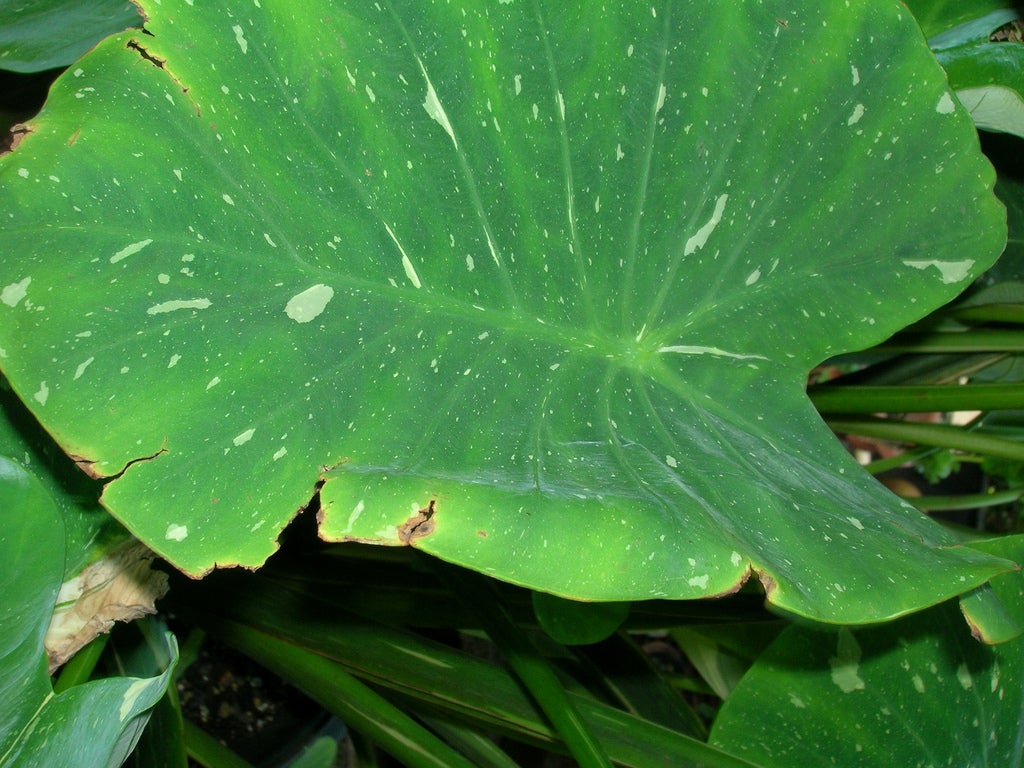Elephant Ear With Brown Edges: Why Do Elephant Ear Plants Get Brown On Edge


You can't ask for more visual impact than the large leaved Colocasia, or elephant ear plant. That said, leaf browning on elephant ears is a common complaint. Why do elephant ear plants get brown on edges? It is often due to improper siting but might also have cultural or disease causes. They are tropical plants and cultivation of this big leaved beauty requires moisture, heat and bright but indirect sun. Elephant ears are excellent houseplants and can also grow nicely outdoors in warm regions and as summer annuals in cooler zones. They are part of a group of tubers that produce taro, a popular food in tropical locations. While they perform well in full shade, the best exposure is where there is some protection from the hottest rays of the sun. They are heavy feeders and require consistently moist soil to present their most attractive aspect.
Why Do Elephant Ear Plants Get Brown on Edge?
The most common reason for the phenomenon is simply leaf scorch. In high light, they may get burnt along the edges of the arrow-shaped leaves. This won't kill the plant but does affect the appearance of the glossy foliage, which is the focal point of the ornamental plant. Provide bright light but shield the plants when temperatures are scorching, especially when the heat of the day is highest. In this case, it is easy to prevent the edges of elephant ear turning brown by positioning a garden umbrella to provide shade, tilting the blinds a bit for indoor plants, or relocating it to a region of the garden where some dappling occurs at midday. Other reasons for an elephant ear with brown edges might be due to improper cultivation.
Cultural Concerns for Elephant Ear with Brown Edges
The second most probable cause for elephant ear leaves turning brown stems from the care of the plant. They need to have plenty of water and any plant that is allowed to dry out will show displeasure with dry, crinkling leaf edges. Leaf browning on elephant ears also occurs when the plant is starving and hasn't been fed. Give it high nitrogen plant food in spring and again mid-season to promote healthy big foliage. They are also susceptible to cold temperatures. Exposure to conditions in USDA plant hardiness zones below 8 will experience cold snaps if left in the ground. To prevent this, container garden the Colocasia and move it indoors when cool temperatures threaten. If the leaves continue to die, clip them off and remove the tubers for storage where temperatures are warm and dry. Wrap them in sphagnum moss and repot in early spring.
Bugs, Diseases and Other Problems
Other concerns for elephant ear leaves turning brown might be pest infestations. Insects that nibble the edges or suck sap from the leaves may cause this damage. Look for pests such as aphids, mealybugs and mites. Wash them off the leaves and apply a horticultural soap to prevent their return. Fungal issues also plague in-ground plants when irrigation water splashes on the leaves. Water from the base of the plant to prevent this occurrence. If you notice edges of elephant ear turning brown and all other issues have been addressed, try potting it in a good, clean potting soil mixed with one-third peat moss and moving it to a location where you can baby it for a while. It may have been a soil condition underlying the plant's foliage problems.
Sign up for the Gardening Know How newsletter today and receive a free copy of our e-book "How to Grow Delicious Tomatoes".

Bonnie Grant is a professional landscaper with a Certification in Urban Gardening. She has been gardening and writing for 15 years. A former professional chef, she has a passion for edible landscaping.